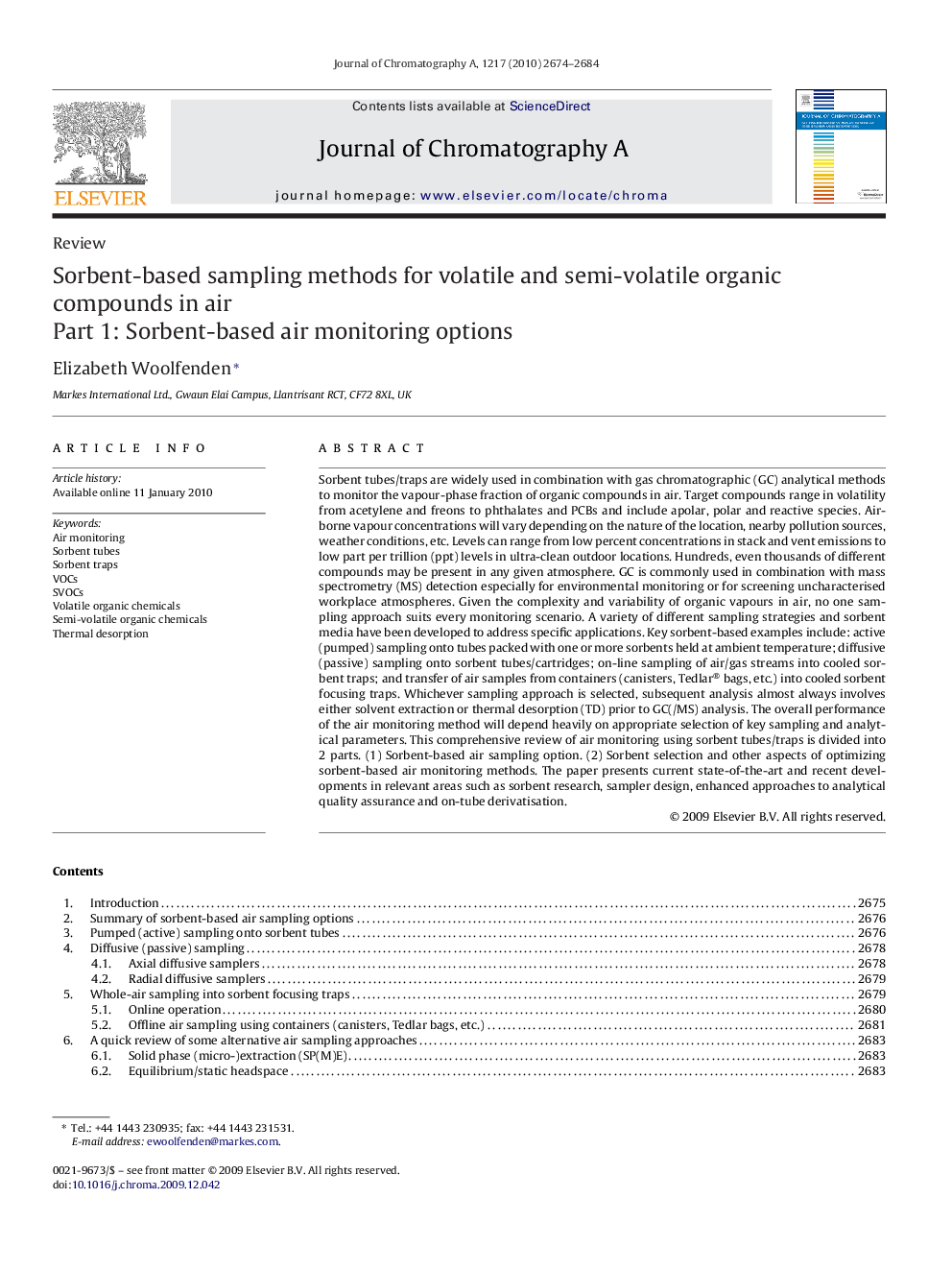| کد مقاله | کد نشریه | سال انتشار | مقاله انگلیسی | نسخه تمام متن |
|---|---|---|---|---|
| 1209758 | 965351 | 2010 | 11 صفحه PDF | دانلود رایگان |

Sorbent tubes/traps are widely used in combination with gas chromatographic (GC) analytical methods to monitor the vapour-phase fraction of organic compounds in air. Target compounds range in volatility from acetylene and freons to phthalates and PCBs and include apolar, polar and reactive species. Airborne vapour concentrations will vary depending on the nature of the location, nearby pollution sources, weather conditions, etc. Levels can range from low percent concentrations in stack and vent emissions to low part per trillion (ppt) levels in ultra-clean outdoor locations. Hundreds, even thousands of different compounds may be present in any given atmosphere. GC is commonly used in combination with mass spectrometry (MS) detection especially for environmental monitoring or for screening uncharacterised workplace atmospheres. Given the complexity and variability of organic vapours in air, no one sampling approach suits every monitoring scenario. A variety of different sampling strategies and sorbent media have been developed to address specific applications. Key sorbent-based examples include: active (pumped) sampling onto tubes packed with one or more sorbents held at ambient temperature; diffusive (passive) sampling onto sorbent tubes/cartridges; on-line sampling of air/gas streams into cooled sorbent traps; and transfer of air samples from containers (canisters, Tedlar® bags, etc.) into cooled sorbent focusing traps. Whichever sampling approach is selected, subsequent analysis almost always involves either solvent extraction or thermal desorption (TD) prior to GC(/MS) analysis. The overall performance of the air monitoring method will depend heavily on appropriate selection of key sampling and analytical parameters. This comprehensive review of air monitoring using sorbent tubes/traps is divided into 2 parts. (1) Sorbent-based air sampling option. (2) Sorbent selection and other aspects of optimizing sorbent-based air monitoring methods. The paper presents current state-of-the-art and recent developments in relevant areas such as sorbent research, sampler design, enhanced approaches to analytical quality assurance and on-tube derivatisation.
Journal: Journal of Chromatography A - Volume 1217, Issue 16, 16 April 2010, Pages 2674–2684